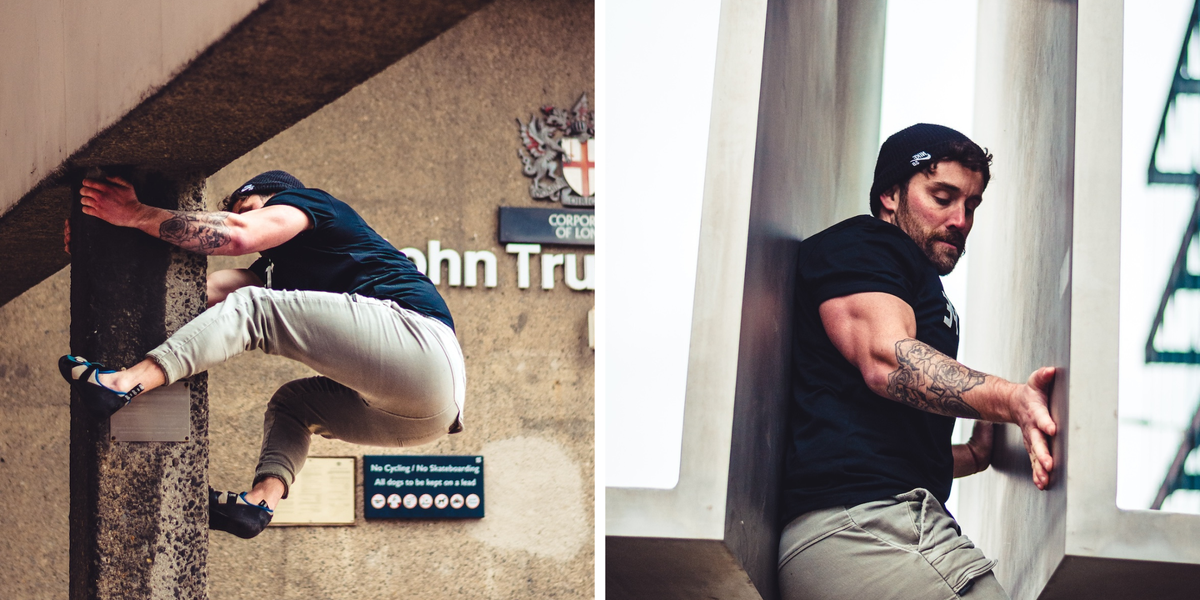I’m wedged into a gap about 50cm wide, desperately pushing as hard as I can into the steel wall in front of me to save myself from slipping. Granted, I’d only fall about 3.5m, and there is a mat beneath me. But from my current position, I’d probably land directly on my arse. This is something I’m keen to avoid, not least given the throngs of passers-by now gazing up at the man awkwardly clambering around barefoot inside an architectural sculpture. St Paul’s Cathedral looms to my left, the Millennium Bridge to my right. It’s midday on a Thursday in one of the busiest thoroughfares in London. I’d prefer not to fall on my arse right now.
My coaches for the day, Alexander Norden and Bobby Gordon-Smith, run an Instagram page called London Buildering. The word buildering is a portmanteau of bouldering and buildings, and it does what it says on the tin; climbers scale buildings and other urban features using techniques and kit adopted from bouldering and rock climbing.
The question of exactly what separates buildering from parkour – another sport based on dynamically traversing urban environments – is widely debated. From my impression it’s more about a vibe than any kind of delineating line. The term buildering can be traced back to the 19th century, when a British alpinist produced a guide to climbing the buildings at Trinity College in Cambridge. Since then, urban climbers from New York to Santiago have documented their ascents of landmarks and skyscrapers – sometimes with fatal consequences.
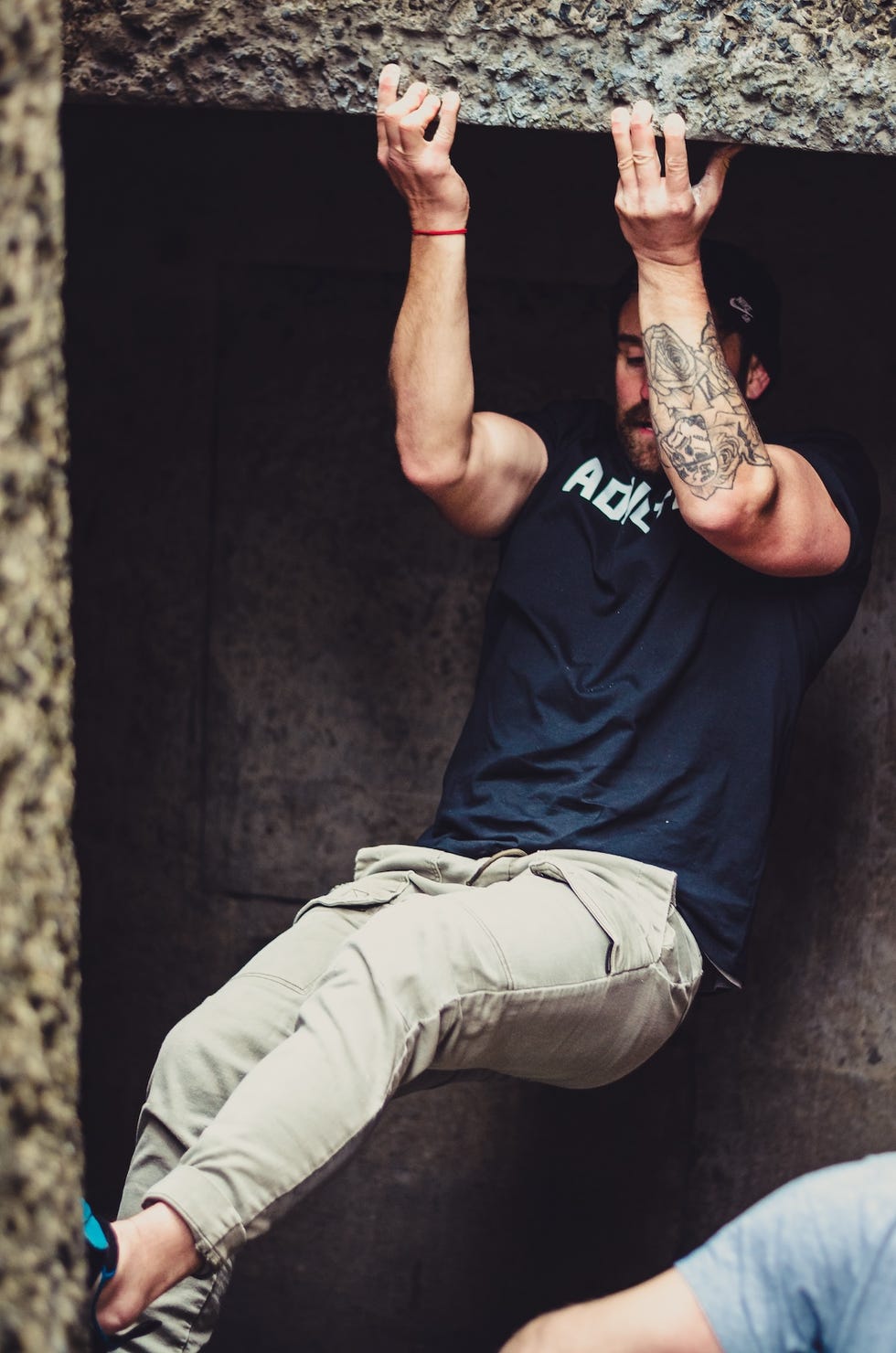
In fact, it goes without saying that anyone who sets out to scale buildings should do so with experienced guides, appropriate safety equipment and a firm grasp on the legal and ethical implications. The public nature of the pursuit means a haphazard approach risks not just your own safety, but that of those around you.
As we make our way towards our first climb of the day at the Barbican Estate, I ask Alex how he found himself in this world. He tells me that his love for bouldering was never quite sated in indoor gyms, and with the best rock-climbing spots largely huddled together in the north of England, outdoor training was hard to come by. Buildering solved this problem.
Don’t Take the Stairs
Buildering borrows its grading system from climbing. It’s also absorbed the naming conventions that range from the obvious (a geographical location) to the absurd (ones requiring a long explanation involving particle physics or ancient Greek). The first spot we’re heading towards, named Chirality, sits in the latter category.
I spot a large chimney protruding from the ground in the centre of the street, a concrete spiral staircase coiling around it, down to what I presume is an underground car park. Our descent is barred by a large gate, which – wanting to impress my tutors – I quickly vault.
We reach the ‘problem’ – bouldering-speak for a route – on a dimly lit landing halfway down the staircase. I’m to reach up, gripping the bottom edge of a wall above my head, then pull myself up using just my fingertips, find an advantageous toe hold and work my way up, applying outward pressure to keep myself wedged between the walls, all the way up to the street above. It sounds improbable in explanation, but in execution, it feels impossible.
Bobby and Alex give me various pointers, but despite having specialist climbing shoes, designed for ‘toeing’ (finding ridiculously small crevices in which to jam your toes), I’m unable to complete the route, requiring help from Bobby – a suitably qualified gymnastics coach – to spot me safely back on to the mat below.
As we move on to our next climb, I ask Alex what Chirality is ‘graded’ at. He tells me it’s a V1. In theory, anything below a V2 is considered a beginner’s climb. Struggling here doesn’t bode well for the rest of the day…
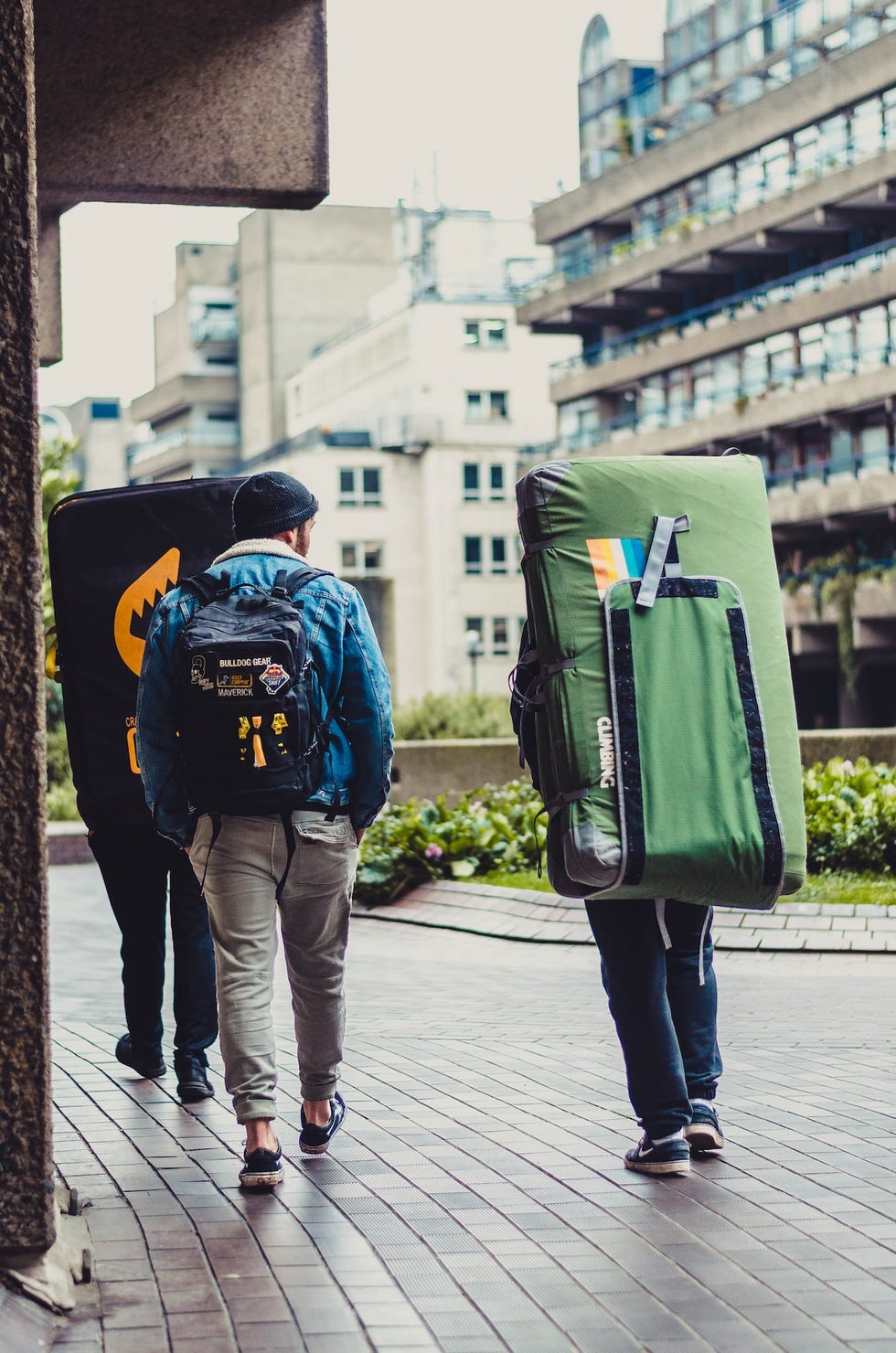
We tackle a few more routes around the Barbican, with varying degrees of success. All of them test me in different ways, from challenging my grip strength to the explosive leaps of faith that get me from hold to hold. As I’m forced into uncomfortable positions, I learn buildering requires a surprising degree of hip mobility. Despite some enthusiastic attempts, I don’t manage to ‘top out’ (ie, reach the top) on any of the climbs. My misspent youth frequently saw me clambering on rooftops and experimenting with parkour, but 20 years older, and as many kilos heavier, I’ve got to admit I’m feeling sluggish.
As we head south towards the river, I probe Alex and Bobby on the legalities of buildering. Recalling my own youthful experiences scarpering away from security guards and the police, I ask them whether or not they have frequent run-ins with authority. ‘I always used to carry around a little card with all the details of the laws on trespassing and criminal damage,’ Alex tells me.
If you’re curious, buildering.net has an FAQ section dedicated to the legal ramifications of the sport, pointing out that you may be subject to some trespassing laws and – depending on what you’re climbing – could end up getting sued or arrested. They diligently advise builderers to do their homework, and to politely comply with staff, security and police if asked to move on.
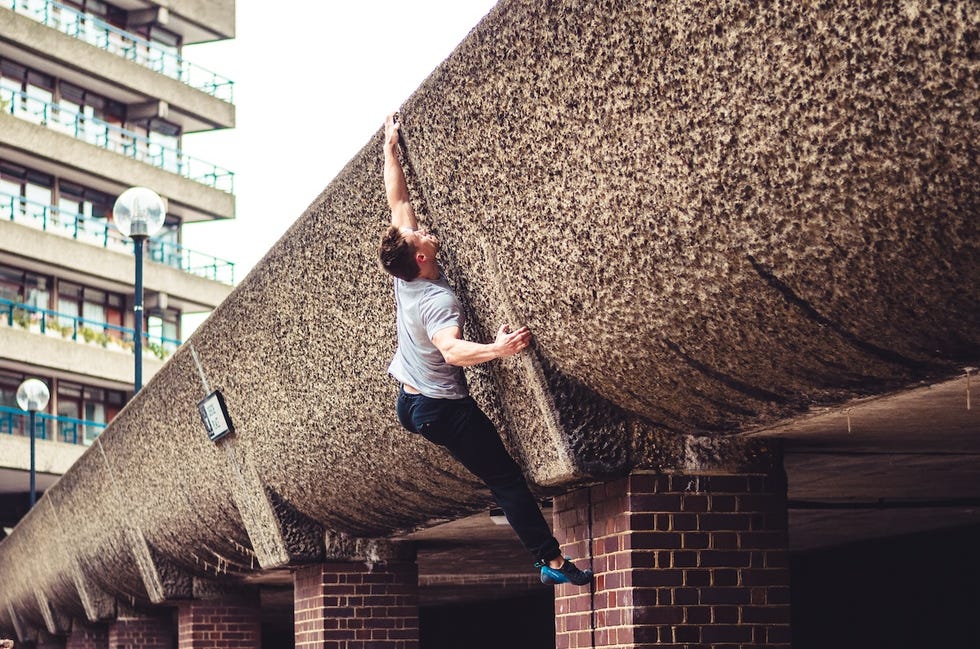
We reach our next spot and, initially, I think the guys are kidding. We’re stood at the foot of a large, angular metallic structure – one of several. The smooth, flat surfaces of the HSBC Gates look as though they have been purposefully engineered to be unassailable. The 5m-tall monolithic gates create an internal walkway just over a metre wide before stepping in at a sharp angle around 2.5m up. The ‘chimney’ of the sculpture runs the rest of the way up with a gap of about 60cm between the mirrored walls. If you look at them directly from the south, they appear as giant tuning forks jutting out of the pavement.
This particular buildering problem, Alex explains, requires you to make your way to the top of the sculpture – from the inside. I feel around inside the sculpture, testing just how grippy the walls are, and whether I’m able to create enough pressure between the interior walls to steadily work my way up – a move known as ‘stemming’. Next, I ask Alex and Bobby for the ‘beta’, climbing talk for intel on how to complete a route. Alex elects to show me how it’s done instead, artfully making his way up into the sculpture’s claustrophobic chimney section, before grabbing the top of the structure and pulling himself out on to the narrow top section. Midway up, he tells me that you can’t make contact with the exterior profile until the final move. This is an arbitrary constraint, one of many that the buildering community creates and shares online in order to properly map a route.
If parkour is about moving from point A to point B in the most efficient manner possible, buildering is about creating deliberately difficult routes to train specific skills – not dissimilar to the way colour-coded routes are set in climbing gyms to create repeatable challenges.
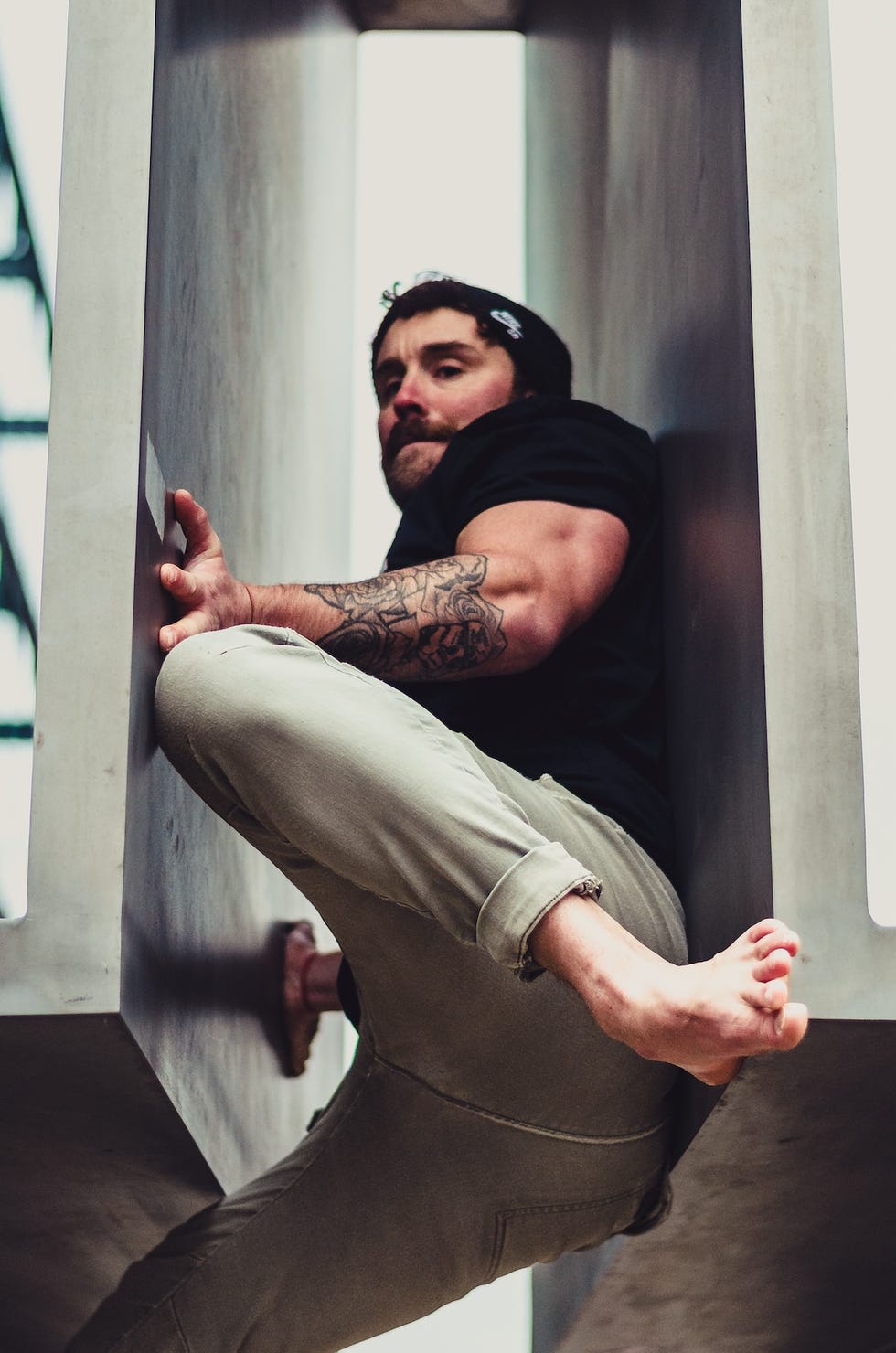
Now we’ve come full circle to the beginning of this story. I’m barefoot (for extra grip), wedged into the thinner section of the gate. At this point, my legs are unable to assist me, and it feels as though I’m one-rep-maxing my bench press just to hold myself in place. Once I’m waist-deep in the breach, Alex explains that my next move is to pivot my hips, bringing a leg into the smaller section with me, and apply pressure through my foot to continue the climb. After more than a few failed attempts, I muster up the mobility to bring my knee high enough to get some purchase with my lower body. But it’s too late – I’m exhausted and can no longer keep myself from slipping down the smooth face and unceremoniously plummeting towards the mat.
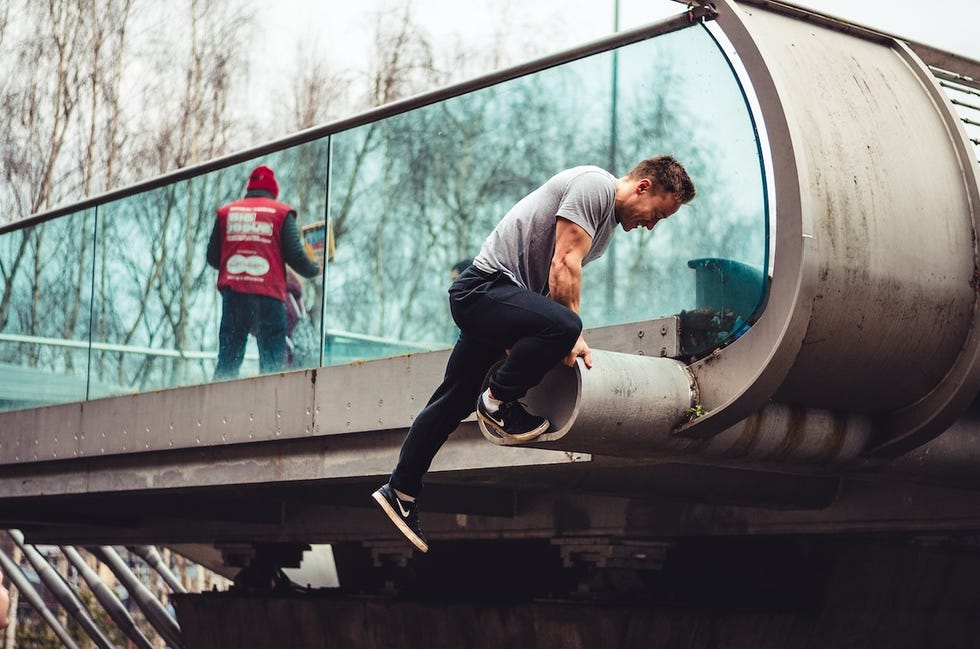
Next, we cross the river to a buildering problem on the south side of the bridge itself. We spend 30 minutes climbing the giant steel struts that fix the bridge to the ground. These shoot up from the concrete at a 45-degree angle; I’m conscious that any slips could end with me dropping down to land on my back or head. Again, I’m grateful for the crash mats and my spotters, who manoeuvre them under me as I climb.
Between attempts, I notice a woman striding purposefully towards us in a Tate Modern uniform – a large art gallery whose property, presumably, we’re now on. I feel a familiar wave of adrenaline, the muscles in my calves tightening in a fight-or-flight response. ‘Guys, this is Tate grounds,’ she says, politely but assertively. ‘Do it on the other side of those bollards if you’re going to do it.’ We have a quick, cordial interaction, and begin packing up the mats. ‘Generally, most people are just curious about what you’re doing,’ Bobby tells me. I may feel slower and heavier, but maybe there are some advantages to being a near-middle-aged man after all.
An Evolving Landscape
As we make our way down the South Bank, I lament the fact that I haven’t managed to top out on any of today’s routes, despite many of them being relatively ‘easy’. Bobby and Alex reassure me that they’ve had a handful of accomplished climbers join them to film content for their social channels, only to watch them struggle to adapt to the unique challenges of buildering.
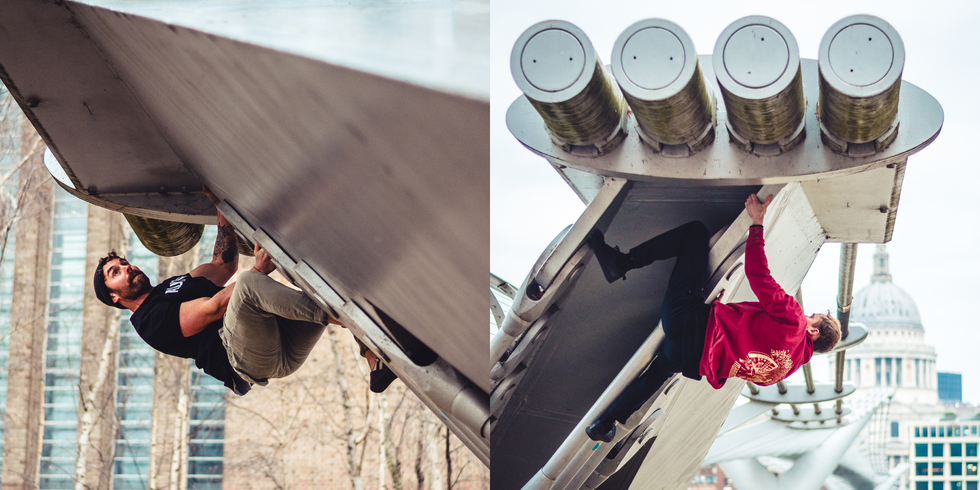
Dusk is slowly creeping in as we reach our final challenge for the day. ‘Wayward Traverse’ begins at the bottom of a staircase that leads up to a bridge above. The goal is to get from here to an adjoining wall around 3m away without touching the ground. From here, the climb tracks vertically up a daunting 6m wall, finishing on the bridge. When we arrive, Alex and Bobby note that the handrail used for the beginning move of the climb is missing. This completely transforms the initial half of the route, and for the first time, they seem to forget I’m there as they excitedly begin sussing out new ways to traverse the distance.
After some time spent trying to wedge my toe into an impossibly small dent in the wall, we concede that, as a possible V4, the difficulty of the first half of the problem might outstrip my enthusiasm. Bobby tells me to start at ‘the crack’, a tiny gap where the two walls meet, just small enough to wedge my fingers into. From here, I’m to press my feet into the wall as a counter pressure and slowly work my way up the crack. A streetlight midway up the route springs into life against the growing darkness as I begin to climb.
‘Don’t let your hands get too far above your feet!’ I’m instructed from below. ‘Get your toes to the rougher part of the wall, they’ll grip more!’ This sort of commentary is common in climbing; often your spotter or belayer – whose face is not mere inches away from the problem – can see more than you, and is better positioned to help find your next move. I make it to a transitionary part of the climb, where I shift my weight on to my arms holding a small ledge 4.5m from the ground. All I need to do is heave my weight up, and I’ll be in the final few moves of the route. But at this point, I’m exhausted. My fingers and biceps are burning, my feet are struggling to find grip on the smooth stone wall. I look down. In the dim light, the mat seems miles away. I look up. The next hold looks even further away. I decide to test my arms, but I don’t commit – and as I pull myself up slightly my fingers give way. I slip down the wall, landing with a thud.
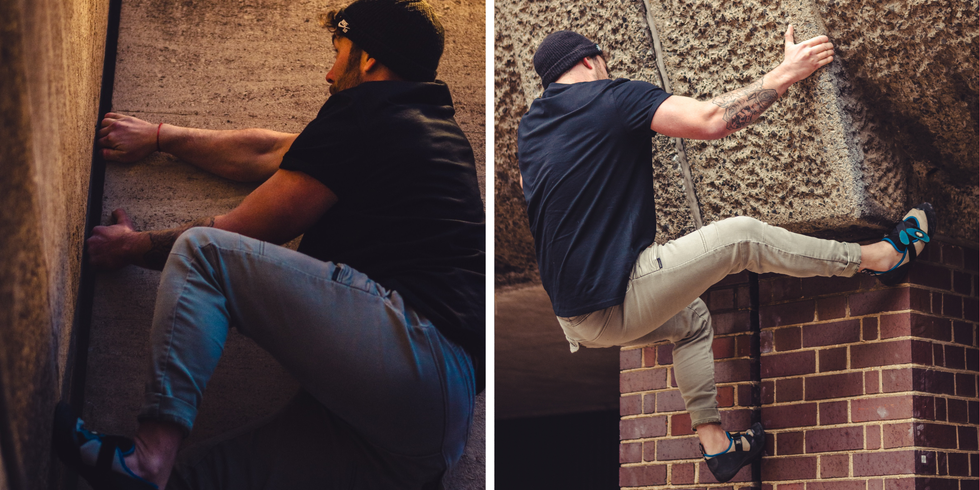
Over dinner that evening, Alex, Bobby and I spend hours discussing the countercultural nature of buildering, comparing it to other pursuits like skateboarding and graffiti, in which urban environments are reclaimed and reimagined in the name of play and art. While explaining his usual process for finding new routes in areas, Alex tells me, ‘I look up a lot,’ which strikes me as profound in a world where we rarely lift our gaze from our phones.
It also occurs to me that, despite its risks, buildering is virtually free. Like skating and parkour, it can provide an outlet for those who might not have access to climbing clubs or costly trips to alpine bouldering spots, plus a community of like-minded individuals with whom to enjoy the pursuit.
Much earlier in the day, Alex had told me that he preferred climbing outside, but couldn’t always make it out to the more picturesque spots. Buildering, he said, provided a halfway house. But this strikes me as a false dichotomy – a conflation of ‘the outdoors’ only with places of natural beauty. Yes, it’s nice to get to idyllic green spaces, but the benefits we derive simply from moving our bodies in the open air are far too great to postpone simply because we’re waiting for a better version of ‘outside’. I think what buildering offers is an opportunity to return to nature, at least partially, wherever we find ourselves. To engage with our surroundings in curious, novel and engaging ways. And to build serious strength and fitness, to boot. You just have to look up.
Related Stories
With almost 18 years in the health and fitness space as a personal trainer, nutritionist, breath coach and writer, Andrew has spent nearly half of his life exploring how to help people improve their bodies and minds.
As our fitness editor he prides himself on keeping Men’s Health at the forefront of reliable, relatable and credible fitness information, whether that’s through writing and testing thousands of workouts each year, taking deep dives into the science behind muscle building and fat loss or exploring the psychology of performance and recovery.
Whilst constantly updating his knowledge base with seminars and courses, Andrew is a lover of the practical as much as the theory and regularly puts his training to the test tackling everything from Crossfit and strongman competitions, to ultra marathons, to multiple 24 hour workout stints and (extremely unofficial) world record attempts.
You can find Andrew on Instagram at @theandrew.tracey, or simply hold up a sign for ‘free pizza’ and wait for him to appear.
